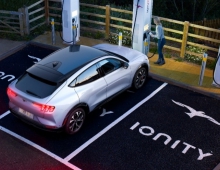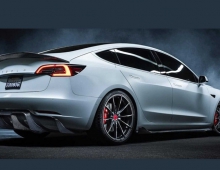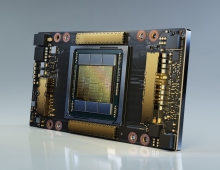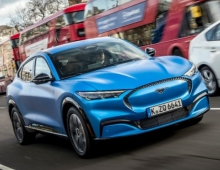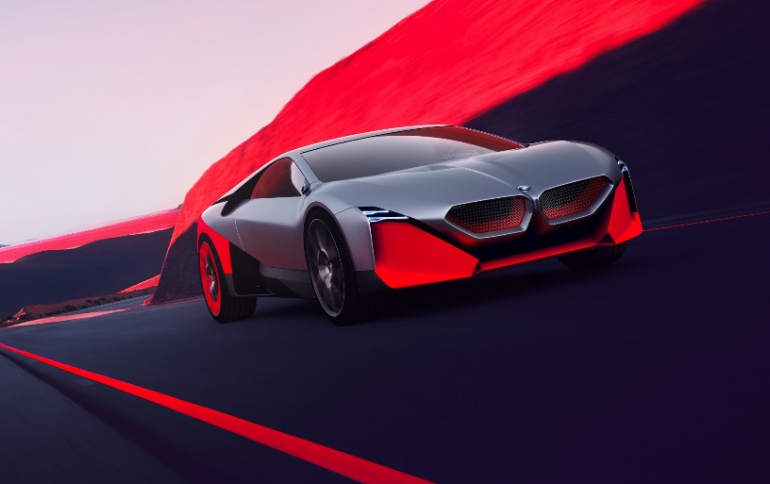
BMW Unveils the Vision M Next Self-driving Hybrid
BNW envisions a future where drivers will be able to choose whether they wish to be driven or do the driving themselves, with the BMW Vision M NEXT.
The concept offers a foretaste of the BMW M brand’s electrified future, with vehicles featuring intelligent technologies on board provide comprehensive yet carefully targeted assistance.
“The BMW Vision M NEXT provides a glimpse into the future of sporty driving,” says Adrian van Hooydonk, Senior Vice President BMW Group Design. “Where the BMW Vision iNEXT illustrated how autonomous driving is set to transform life on board our vehicles, the BMW Vision M NEXT demonstrates how state-of-the-art technology can also make the experience of driving yourself purer and more emotionally engaging. In both models, the focus is firmly on the people inside. Design and technology make the ‘EASE’ and ‘BOOST’ experiences more natural and more intense.”
The BMW Vision iNEXT and BMW Vision M NEXT Vision Vehicles represent prototype versions of BMW’s future experience concepts “EASE” and “BOOST”.
EASE encompasses all the experiences during a journey when the vehicle assumes the task of driving. Here, the vehicle is transformed into a living space on four wheels, where the passengers can feel safe and secure.
BOOST, meanwhile, stands for the ultimate active driving experience. The EASE and BOOST concepts are underpinned in equal measure by the building blocks for the BMW Group’s future, comprising Autonomous driving, Connectivity, Electrification and Services (ACES). The Design lends these areas visual expression and makes the underlying technology something you can engage with (D+ACES).


“The BMW Vision M NEXT is a progressive hybrid sports car that makes a very clear and confident statement, in terms of both appearance and interaction,” says Domagoj Dukec, Vice President BMW Design. The emotion-stirring exterior design clearly announces the BMW Vision Vehicle’s performance potential, borrowing styling cues from both classic and contemporary BMW sports cars in the process. The BMW Vision M NEXT draws its inspiration from the iconic BMW Turbo and BMW i8 plug-in hybrid and adopts a future-focused interpretation of design elements such as the low-slung, wedge-shaped silhouette, gullwing doors and striking color scheme. The front and rear ends are finished in the matt-neon shade Thrilling Orange, producing a contrast against the exterior’s otherwise silk-matt Cast Silver metallic paintwork.
The Power PHEV drive system in offers the choice between electric all-wheel drive and pure rear-wheel drive, with either all-electric propulsion or the power of a turbocharged four-cylinder petrol engine. System output of 441 kW (600 hp) produces a top speed of 300 km/h (186 mph) and enables the BMW Vision M NEXT to sprint from 0 to 100 km/h (62 mph) in just three seconds. There is also a BOOST+ mode that puts extra power on tap at the push of a button. The maximum range when driving in all-electric mode is 100 km (62 miles). This means the BMW Vision M NEXT is a sports car that would also be suitable for use in city centers where zero-emissions zones may come into force in the future.
An M-branded plug-in hybrid would likely weigh between 3,500 and 3,800 pounds, and would have around 600 horsepower. For reference, the current M5 sedan has 600 horsepower, but weighs 4,370 pounds.
A fully electric M would no doubt be much heavier, simply because of the added weight of the batteries needed to achieve M-tastic performance. The company's EV development car, called "Lucy" internally, makes 720 horsepower, but also weighs 5,300 pounds.
The spokes’ open, three-dimensional architecture maximizes cooling of the large brake discs at the front, while inserts optimize aero efficiency at the rear. The rear wheels on the BMW Vision M NEXT measure 22 inches in diameter, making them one inch larger than the front wheels (21 inches) and further emphasizing the car’s wedge-shaped appearance.
Facial recognition technology allows the car to unlock automatically as the driver approaches. Pressing the touch sensor on the gullwing doors prompts them to swing open. The minimalist interior revolves entirely around the actively engaged driver. The interior appears as if cut from a single mould, with functional elements such as the air vents integrated almost out of sight. The seat shells form part of a seat sculpture with a flowing design.


Taking pride of place in the interior, the BOOST Pod forms the interface between driver and vehicle. It brings together all the control options and information across three distinct visual tiers in the driver’s direct field of view. The first plane is formed by the horizontally arranged steering wheel featuring two small displays. Following this in the driver’s line of sight is a Curved Glass Display, a new addition whose transparent surface stretches around the steering wheel like a visor. The full-surface Augmented Reality Head-Up Display in the windscreen constitutes the third plane. Everything therefore happens directly in the driver’s line of sight. The driving settings can be modified on the steering wheel, while information such as revs, road speed, energy management, the driver’s heart rate and availability of BOOST+ mode is spread among a total of five clusters in the Curved Glass Display behind. BOOST+ mode can be engaged at the touch of a button to release extra power. The car alerts the driver when the ideal moment arrives to activate BOOST+.
The information displayed is adapted to the current speed. As the vehicle speeds up, the information centers increasingly on driving-related data and moves into the driver’s eye-line. It is possible to communicate with the Intelligent Personal Assistant at all times while driving – if drivers wish to book the visionary Valet Parking Service for their destination, for instance. Here, a concierge is on hand when they arrive to take the vehicle, park it and bring it back again at the desired time. All done using the MyBMW App.
All of this in a design that's a concept now, but some of the elements could make their way into a production vehicle.
BMW plans to launch 25 new electrified models by 2023, 12 of which will be full EVs.
The company is betting big on plug-in hybrid vehicles. This year alone, BMW will offer new, PHEV versions of the 3 Series, 7 Series, X3 and X5.
BMW's next fully electric vehicle will be the iX3 SUV, which is expected to arrive in 2020.
Mini will also get in on the electrification game. The small car manufacturer plans to launch the 2020 Cooper SE later this year.


